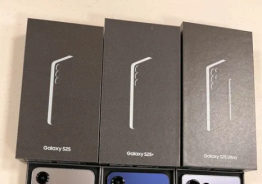Apple unleashed the iPhone 5 on Sept. 12, and the next-generation smartphone is creating a buzz in the market. Tech gurus opine that the smartphone lacks consumer appeal and the "wow factor", which has been synonymous with Apple's products.
With competitors like Nokia and Samsung going all out to woo the consumers with their respective Lumia 920 and Galaxy S3 offerings, the Cupertino tech giant has plenty of expectations to live up to. Analysts are of the opinion that rather than being the iconic innovator, Apple has played it safe with the iPhone 5.
"There are a lot of things they could have done, especially with competitors trying everything," said IDC analyst Al Hilwa. "But they're not going to do something unless they can do it in a decisive way."
Experts aver that the sixth iteration of the iPhone is merely a redesigned version of its predecessor, iPhone 4S, with slight improvements packed in to fulfil consumer expectations.
"It's the same phone but sleeker," said Sterne Agee analyst Shaw Wu. "They arguably could have done more, but - as the saying goes - if it ain't broke, don't fix it."
The iPhone 5 may have placated iFans who were yearning for a new iDevice; however, the smartphone has failed to surprise consumers and tech experts. Apple is known for its Midas touch and is seen as a market innovator rather than a follower. In 2011, when the company launched its iPhone 4S, it introduced the world to Siri, its voice interaction feature that set the trend for other devices. Samsung's S-Voice feature and the recently announced Nuance's Dragon Assistant beta voice recognition software for Ultrabooks have undoubtedly taken a page out of Apple's book.
However, with the iPhone 5, Apple can only boast of improvements which pale next to the offerings of its rivals. The iPhone 5 sports an enhanced 4-inch screen, is 20 percent lighter than the iPhone 4S, and features an 8-megapixel sapphire crystal lens iSight camera that can take panoramic shots and has Face detection. By contrast, Samsung's Galaxy S3 has a 4.8-inch screen and the Nokia Lumia 920 a 4.5-inch one. Both the smartphones sport an 8 megapixels and 8.7 megapixels rear-facing cameras, with the Nokia smartphone employing the much-touted PureView technology.
Additionally, even the recently launched HTC One X and Motorola's Droid RAZR HD and Droid RAZR Maxx HD feature 4.7-inch screens. With the industry norm in the high-end smartphone bracket being 4 inches plus, Apple may have taken the bigger screen route but still falls short of competing devices.
"There is not a wow factor because everything you saw today is evolutionary. I do think they did enough to satisfy," said Michael Yoshikami, chief executive of wealth management company Destination Wealth Management.
Moreover, Apple brought the latest iOS 6 to the smartphone; however, whether the operating system can oust Google's Android and Microsoft's Windows Phone 8 platforms remains to be seen.
"Where they are pushing the envelope, and where they remain the one to beat, is on the experience those features bring to the consumer," said Carolina Milanesi, Gartner Research analyst. "While other vendors continue to focus just on the hardware - delivering the speeds and feeds and bigger batteries - Apple focuses on pulling the operating system, the hardware and what you can consume on the hardware."
Most of the current crop of high-end smartphones usually offer NFC support. Apple has included the Passbook feature, which it says will more than make up for NFC's absence. However, the feature is not expected to be in effect until next year, suggest rumors. Additionally, Apple may have unveiled a new Lightning dock connector, but its decision to not incorporate wireless charging, like Nokia did with its Lumia 920, has come as a surprise to tech experts.
"Having to create another device you have to plug into the wall is actually, for most situations, more complicated," justified Phil Schiller, Apple's VP of marketing.
Consumers are known for their shifting preferences in the constantly evolving smartphone market. To hold consumer interest and make the product more attractive and appealing, companies usually resort to smart marketing maneuverers in order to entice them. Samsung took the customer retention route with its announcement of four new colors for its hugely-popular Galaxy S3, an improvement on the black and white options it previously offered.
Apple, on the other hand, continues to stick to the previous black and white color variants, despite the fact that the company is offering its new iPod Touch, which is physically identical to the iPhone 5, in five vibrant hues. The inclusion of the color options and "the Loop" would have added to the iPhone 5's consumer appeal.
Currently, Samsung leads the smartphone market with a 32.6 percent share followed by Apple with 17 percent. Apple's iPhone 5 would attempt to reclaim the lost glory, but experts aver that the inclusion of several features like a bigger 12-megapixel camera, NFC, and wireless charging abilities would have given the smartphone an edge over its competitors.
© Copyright 2026 Mobile & Apps, All rights reserved. Do not reproduce without permission.












